Abstract
Mutants of Zymomonas mobilis were selected for decreased alcohol dehydrogenase activity by using consecutively higher concentrations of allyl alcohol. A mutant selected by using 100 mM allyl alcohol produced acetaldehyde at a level of 4.08 g/liter when the organism was grown in aerated batch cultures on a medium containing 4.0% (wt/wt) glucose. On the basis of the amount of glucose utilized, this level of acetaldehyde production represents nearly 40% of the maximum theoretical yield. Acetaldehyde produced during growth was continuously air stripped from the reactor. Acetaldehyde present in the exhaust stream was then trapped as the acetaldehyde-bisulfite addition product in an aqueous solution of sodium bisulfite and released by treatment with base. Acetaldehyde was found to inhibit growth of Z. mobilis at concentrations as low as 0.05% (wt/wt) acetaldehyde. An acetaldehyde-tolerant mutant of Z. mobilis was isolated after both mutagenesis with nitrosoguanidine and selection in the presence of vapor-phase acetaldehyde. The production of acetaldehyde has potential advantages over that of ethanol: lower energy requirements for product separation, efficient separation of product from dilute feed streams, continuous separation of product from the reactor, and a higher marketplace value.
Full text
PDF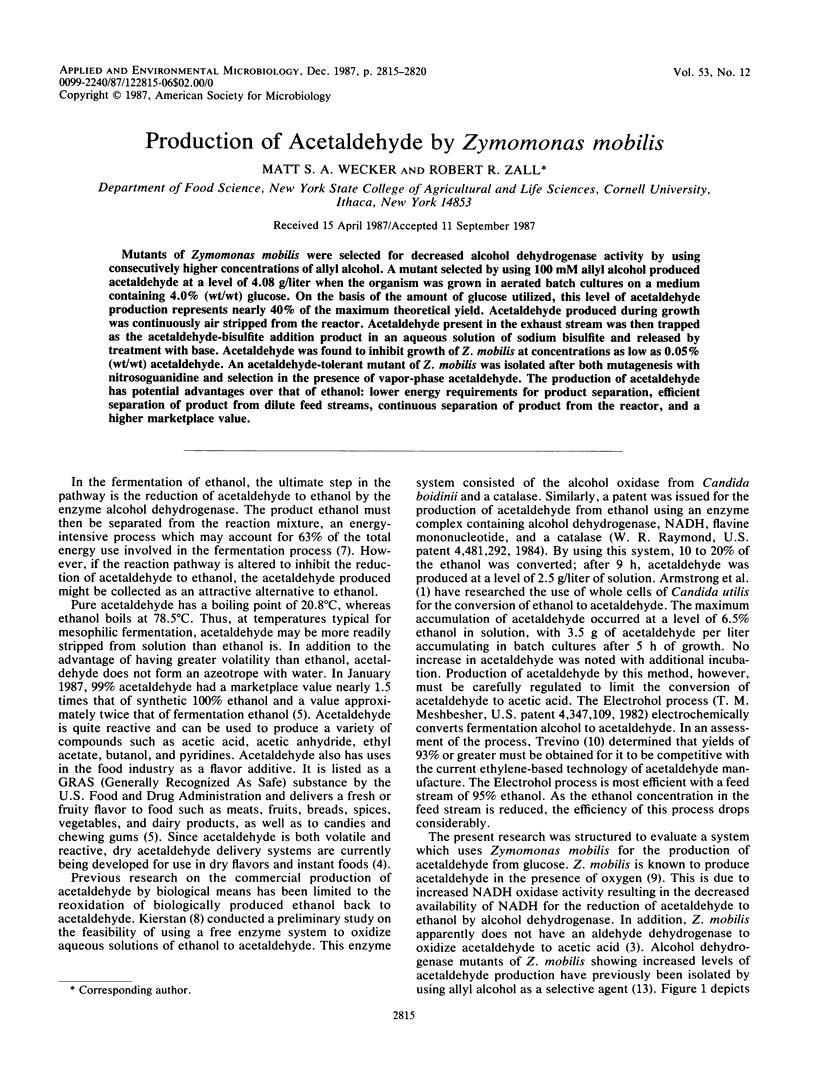
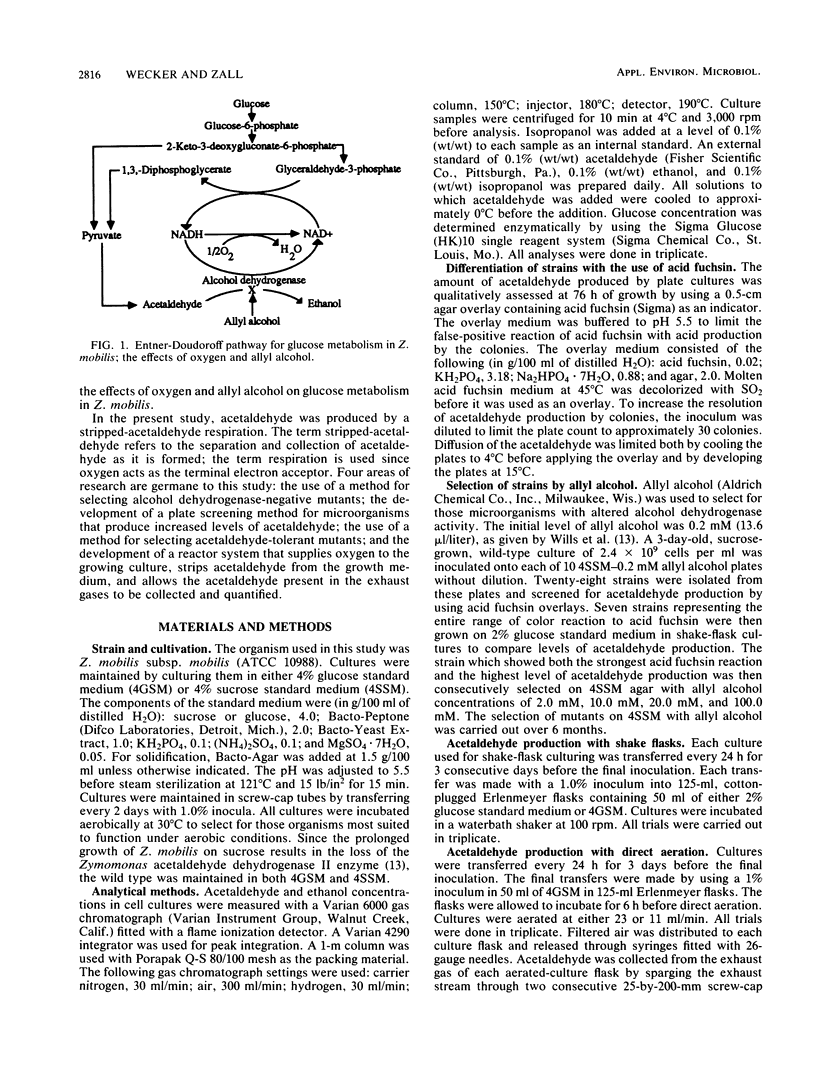
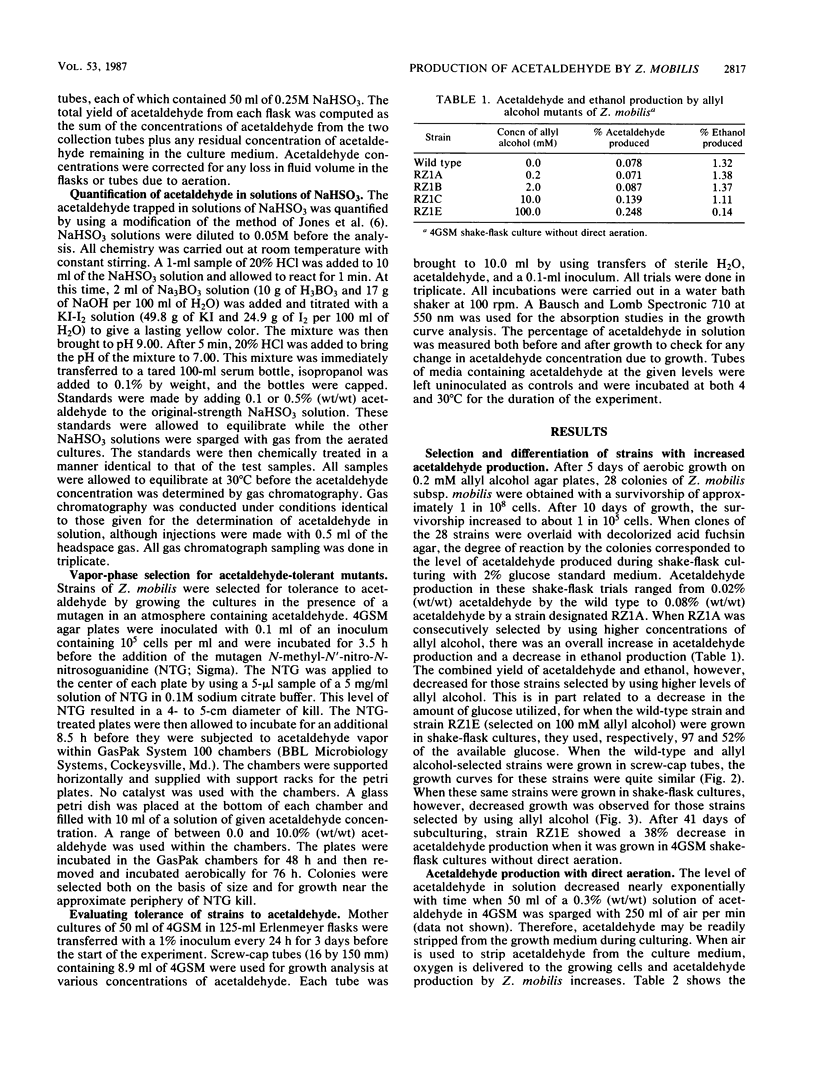
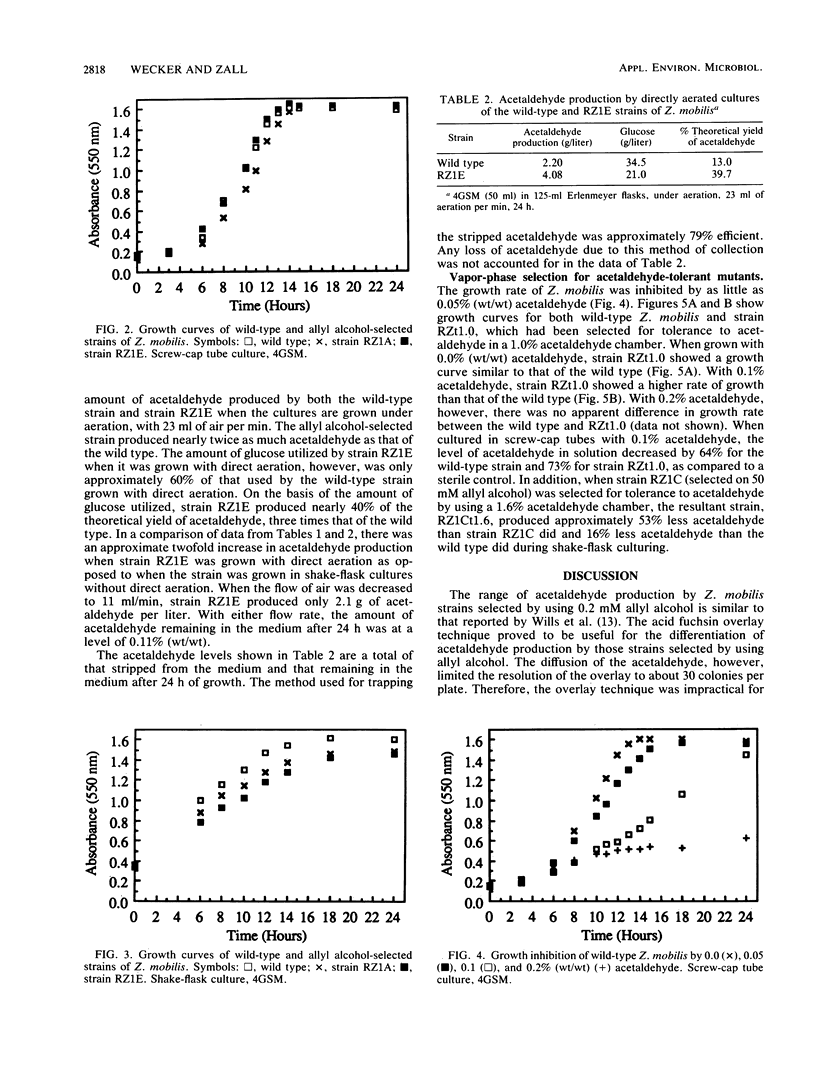
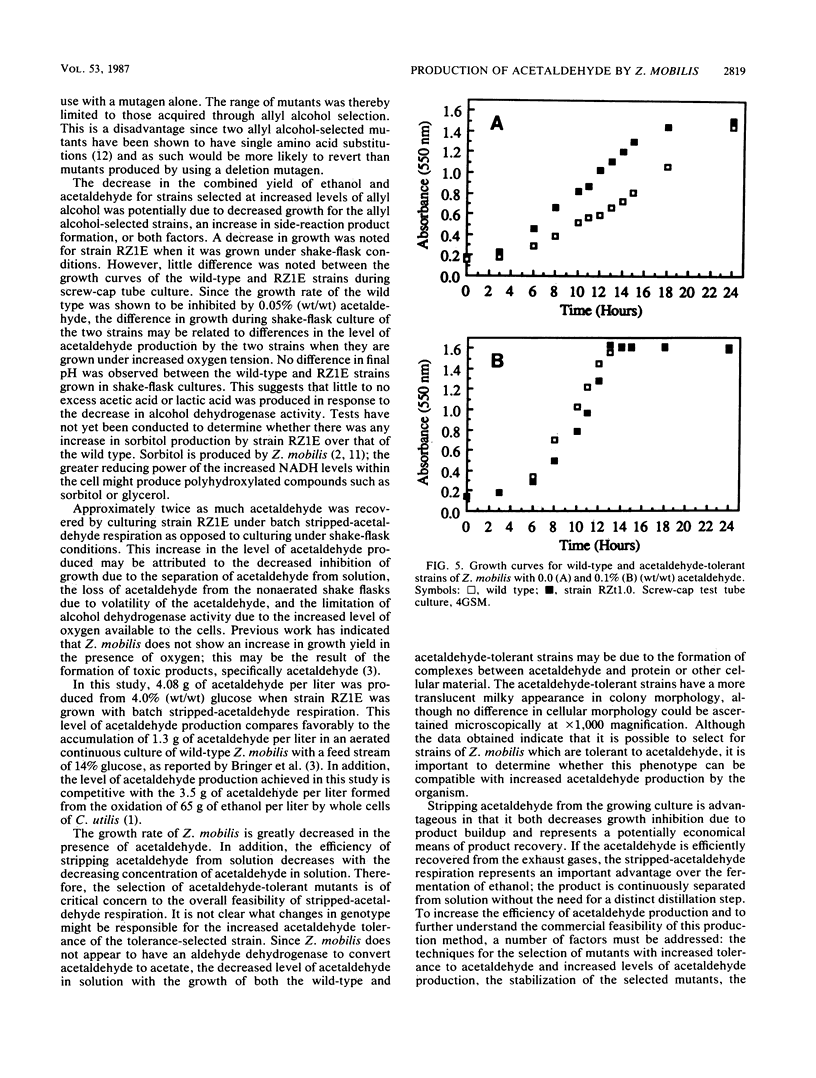

Selected References
These references are in PubMed. This may not be the complete list of references from this article.
- Wills C., Jörnvall H. The two major isozymes of yeast alcohol dehydrogenase. Eur J Biochem. 1979 Sep;99(2):323–331. doi: 10.1111/j.1432-1033.1979.tb13260.x. [DOI] [PubMed] [Google Scholar]
- Wills C., Kratofil P., Londo D., Martin T. Characterization of the two alcohol dehydrogenases of Zymomonas mobilis. Arch Biochem Biophys. 1981 Sep;210(2):775–785. doi: 10.1016/0003-9861(81)90245-9. [DOI] [PubMed] [Google Scholar]


